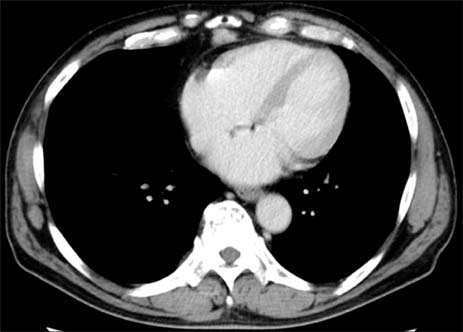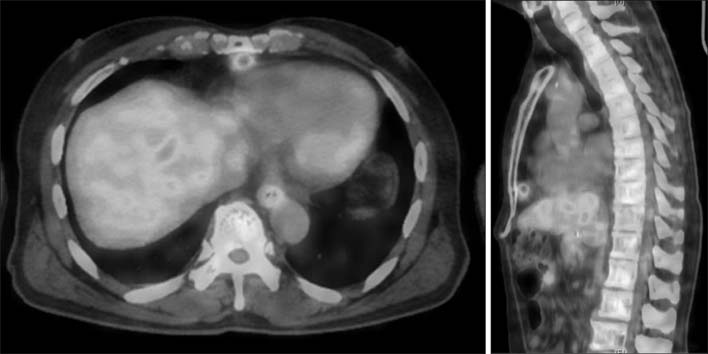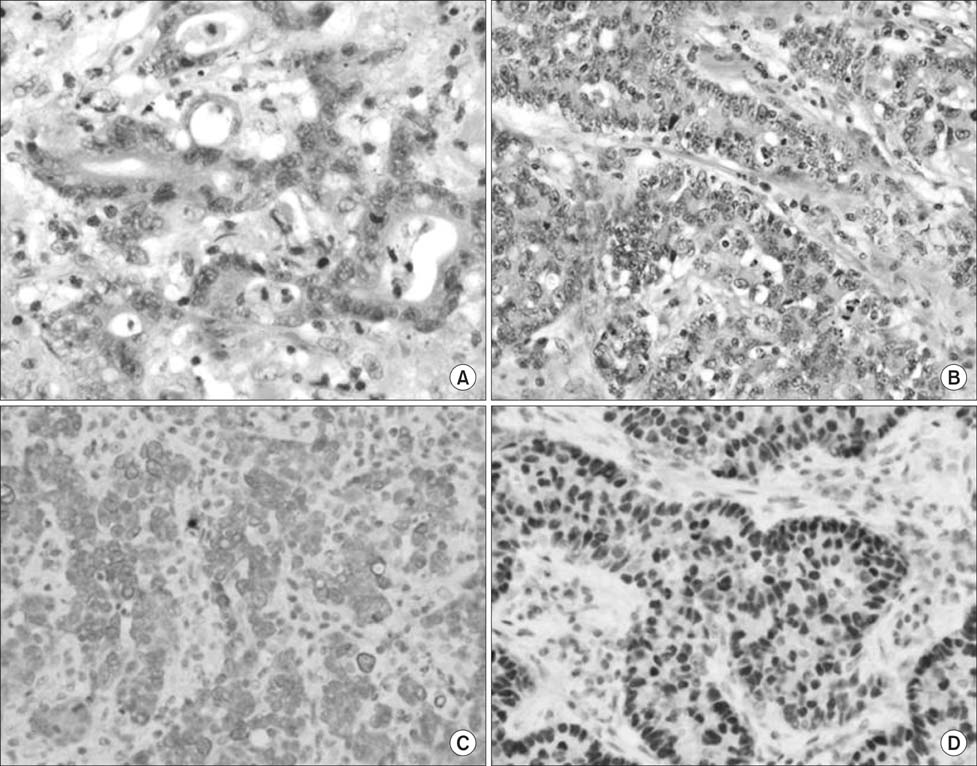J Gastric Cancer.
2014 Sep;14(3):207-210. 10.5230/jgc.2014.14.3.207.
Gastric Adenocarcinoma with Thymic Metastasis after Curative Resection: A Case Report
- Affiliations
-
- 1Division of Surgical Oncology, Department of Surgery, Tottori University School of Medicine, Yonago, Japan. sai10@med.tottori-u.ac.jp
- KMID: 2372533
- DOI: http://doi.org/10.5230/jgc.2014.14.3.207
Abstract
- The peritoneum is the most frequent site of recurrence for gastric cancer after gastrectomy, followed by the liver and lymph nodes. In contrast, metastasis to the thymus is rare. Annual surveillance with computed tomography was performed on a 67-year-old man who previously underwent a distal gastrectomy and D2 lymph node dissection for gastric cancer at Tottori University. Five years after the initial operation, an anterior mediastinal tumor was detected by computed tomography. The patient underwent video-assisted thoracic surgery to remove the tumor. Histopathology revealed adenocarcinoma cells similar to those of the gastric cancer resected 5 years previously. Thymic metastasis was considered likely based on the location of the tumor. The recognition that gastric cancer can metastasize to unusual anatomic locations, such as the thymus, can facilitate an accurate, prompt diagnosis and appropriate treatment.
Keyword
MeSH Terms
Figure
Reference
-
1. Saito H, Tsujitani S, Kondo A, Ikeguchi M, Maeta M, Kaibara N. Expression of vascular endothelial growth factor correlates with hematogenous recurrence in gastric carcinoma. Surgery. 1999; 125:195–201.
Article2. Japanese Gastric Cancer Association. Japanese classification of gastric carcinoma: 3rd English edition. Gastric Cancer. 2011; 14:101–112.3. Hayashi S, Hamanaka Y, Sueda T, Yonehara S, Matsuura Y. Thymic metastasis from prostatic carcinoma: report of a case. Surg Today. 1993; 23:632–634.
Article4. Clark SL Jr. The reticulum of lymph nodes in mice studied with the electron microscope. Am J Anat. 1962; 110:217–257.
Article5. Phillips CJ. Case report: metastatic malignant testicular teratoma of the thymus. Br J Radiol. 1994; 67:203–204.6. Nam MS, Chu YC, Choe WS, Kim SJ, Hong SB, Kim YJ, et al. Metastatic follicular thyroid carcinoma to the thymus in a 35-year-old woman. Yonsei Med J. 2002; 43:665–669.
Article7. Park SB, Kim HH, Shin HJ, Paik MH, Kim DB, Gong G. Thymic metastasis in breast cancer: a case report. Korean J Radiol. 2007; 8:360–363.
Article8. Middleton G. Involvement of the thymus by metastic neoplasms. Br J Cancer. 1966; 20:41–46.
- Full Text Links
- Actions
-
Cited
- CITED
-
- Close
- Share
- Similar articles
-
- A Rare Case of Lymph Node Metastasis from Early Gastric Cancer
- Biliary Tract and Pancreas: Survival and Recurrence Pattern after Curative Resection of Pancreatic Cancer
- Therapeutic approach to non-curative resection after endoscopic treatment in early gastric cancer
- Curative Resection of Inoperable, Locally Advanced Gastric Cancer after Neoadjuvant Chemotherapy with Taxotere and Cisplatin
- The Prognosis of Patients with Stage IV Gastric Carcinoma without Distant Metastasis






